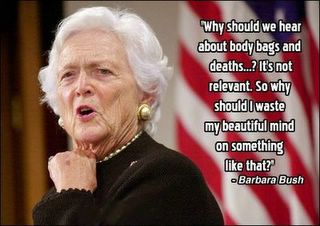Victims of War Are Not To Be Seen Or Heard Or Mentioned


**
"The greatest dignity and respect you can give [victims of war] is to show the horror they suffered, the absolute gruesome horror." -War Photographer David Lesson
By Robert Weitzel
02/23/06 "ICH" -- -- Joseph Bonham was an American soldier. He lost both of his arms and legs and all of his face to an artillery shell. He could not see or hear or speak. Other than that he was healthy and lucid. That was Joe's nightmare. He could be kept alive a long time.
Joe remained an anonymous torso until his head tapping was recognized as Morse code. When his message was finally understood, it was assumed he'd gone insane. Joe asked to be put on exhibit so that children and parents and teachers and politicians and preachers and patriots of every stripe could have a close-up look at war's leavings. It was the only way he could give his nightmare meaning.
Joseph Bonham's request was denied. It was not in the best interest of the country to foist him on an unsuspecting public. He died an "unknown soldier."
On March 18, 2003, two days before her son launched the invasion of Iraq, Barbara Bush appeared on Good Morning America. Our nation's "First Mother" asked Diane Sawyer, "Why should we hear about body bags and death and how many? . . . Oh, I mean, it's not relevant. So why should I waste my beautiful mind on something like that."
First Mother Bush knows her children well. When it comes to war's gallery of death and grotesqueries the big difference between Joseph Bonham and ourselves is that we choose not to see or hear or speak.
We resist and resent any reminder of the human cost of war with epithets and accusations. It is a breech of good taste. It undermines morale on the home front. It is aiding and abetting the enemy. It is unpatriotic and irrelevant. It is a waste of our beautiful minds.
In November 2004 Travis Babbitt was mortally wounded while on patrol in Baghdad. An Associated Press photographer captured his last moments on film. When the Star Ledger of Newark, N. J. and several other papers published the picture their editors were excoriated by readers who called them "cruel, insensitive, even unpatriotic."
Defending the decision to print the photograph, Star Ledger's assistant managing editor, Pim Van Hemmen wrote, "Writing a headline that 1,500 Americans have died doesn't give you nearly the impact of showing one serviceman who died."
Six months after the publication of the picture Babbitt's mother told a Los Angles Times reporter, "That is not an image you want to see like that. Your kid is lying like that and there is no way you can get there to help them. I do think it's an important thing, for people to see what goes on over there. It throws reality more in your face. And sometimes we can't help reality"
In war soldiers and civilians die gruesome deaths and suffer horrific wounds. This is reality. Pictures that capture this miserable fact are not meant to be gratuitously violent. They are merely the unvarnished truth.
Veteran war photographer, Chris Hondros, admits that many of his imagines of war are indeed horrible, but says, " . . . war is horrible and we need to understand that. I think if we are going to start a war, we ought to be willing to show the consequences of that war."
But it is not only the dying that remains invisible and unheard and never mentioned. The armless and the legless and the blind and the burned, the destroyed minds and the disfigured bodies "recovering" at Walter Reed Army Hospital remain as unknown as Joseph Bonham. The national myths and political lies that sent these casualties marching to war cannot abide their wounds.
Joseph Bonham lived in the fictional world of Dalton Trumbo's antiwar novel, "johnny got his gun." But the victims of war are flesh and blood. They have weight. Their lives are counted in years. We cannot turn them into a work of fiction and then refuse to even look at what we have written.
March 20 is the third anniversary of the start of the "The Long War" (formerly the War on Terror) in Iraq. It has cost America more than 340,650 pounds of flesh and bone and viscera, 2,838 gallons of blood, 6,813 pounds of brain matter, and 113,550 unlived years. It has cost Iraq over 18 million pounds of flesh and bone and viscera, 125,000 gallons of blood, 300,000 pounds of brain matter, and 5 million unlived years.
Imagine if we could see this . . . one picture at a time.
On January 31, 2006, Cindy Sheehan, whose son was killed in Iraq, appeared in the gallery of the House of Representatives to hear President Bush's State of the Union address. She was manhandled, shunted from view, and arrested for wearing a t-shirt that displayed the number of American war dead and that asked, "How many more?"
Robert Weitzel lives in Middleton, WI. His essays regularly appear in The Capital Times in Madison, WI. He has also been published in the Milwaukee Journal Sentinel, Skeptic Magazine, Freethought Today, and on the web sites, smirkingchimp.com and talkreason.org. He can be contacted at: debraw@chorus.net
Link Here




0 Comments:
Post a Comment
<< Home